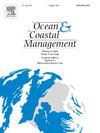北黄海鲸类生物多样性的崩溃:社交媒体和AIS数据揭示了人为威胁和保护热点
IF 5.4
2区 环境科学与生态学
Q1 OCEANOGRAPHY
引用次数: 0
摘要
北黄海曾经是多种鲸类动物的重要栖息地,但由于历史上的捕鲸、过度捕捞和人为压力,已经经历了严重的生态衰退。本研究利用社交媒体数据(2010-2024年)和渔船自动识别系统(AIS)数据(2021-2024年),对这一尚未充分研究的地区的鲸类生物多样性、时空动态、鲸类与渔业的相互作用以及保护挑战进行了评估。通过对搁浅、附带捕获和机会性观察的90条记录(超过170条)进行验证,我们只记录了7种鲸类动物——与20世纪90年代之前的记录相比,物种丰富度明显下降了50%。空间分析显示,在鲸类出没区域10公里范围内(平均距离5.21公里)有83385艘渔船(占总数的41.6%),存在显著的热点重叠(Pearson’s r = 0.185, p < 0.001)。东亚无鳍鼠海豚(Neophocaena asiaeorientalis sunameri)占多数(72.2%),而历史上丰富的物种如长须鲸(Balaenoptera physalus)则缺失。在长山群岛和大连近岸海域发现了关键热点,活动高峰出现在4 - 5月。渔业副渔获物已成为主要威胁,渔船与鲸类直接共生(最小距离= 0.39公里)是证据,而扩大水产养殖基础设施和长期船舶噪音是重要的次要压力。我们的研究结果强调,迫切需要在已确定的热点地区建立海洋保护区、减少副渔获物的战略(例如,声学威慑、装备改装)以及加强公众参与。这项研究证明了社交媒体作为公民科学工具在数据匮乏地区监测神秘海洋巨型动物的有效性,为协调保护优先事项与人为发展提供了可行的见解。本文章由计算机程序翻译,如有差异,请以英文原文为准。
Collapse of cetacean biodiversity in the North Yellow Sea: Social media and AIS data uncover anthropogenic threats and conservation hotspots
The North Yellow Sea, once a vital habitat for diverse cetacean populations, has undergone significant ecological decline due to historical whaling, overfishing, and anthropogenic pressures. This study utilizes social media-derived data (2010–2024) and automated identification system (AIS) data from fishing vessels (2021–2024) to assess cetacean biodiversity, spatiotemporal dynamics, cetacean-fisheries interactions, and conservation challenges in this understudied region. Validating 90 records (over 170 individuals) from strandings, bycatch, and opportunistic observations, we documented only seven cetacean species-a stark 50 % decline in species richness compared to pre-1990s records. Spatial analysis revealed 83,385 fishing vessel positions (41.6 % of total) within 10 km of cetacean sightings (mean distance = 5.21 km), with significant hotspot overlap (Pearson's r = 0.185, p < 0.001). The East Asian finless porpoise (Neophocaena asiaeorientalis sunameri) dominated sightings (72.2 % of records), while historically abundant species like the fin whale (Balaenoptera physalus) were absent. Spatial clustering identified critical hotspots in the Changshan Archipelago and Dalian coastal waters, with peak activity in April–May. Fisheries bycatch, evidenced by direct vessel-cetacean co-occurrence (minimum distance = 0.39 km), emerged as the primary threat, while expanding aquaculture infrastructure and chronic vessel noise represent significant secondary pressures. Our findings highlight the urgent need for marine protected areas in identified hotspots, bycatch mitigation strategies (e.g., acoustic deterrents, gear modifications), and enhanced public engagement. This study demonstrates the efficacy of social media as a citizen science tool for monitoring cryptic marine megafauna in data-poor regions, offering actionable insights to reconcile conservation priorities with anthropogenic development.
求助全文
通过发布文献求助,成功后即可免费获取论文全文。
去求助
来源期刊

Ocean & Coastal Management
环境科学-海洋学
CiteScore
8.50
自引率
15.20%
发文量
321
审稿时长
60 days
期刊介绍:
Ocean & Coastal Management is the leading international journal dedicated to the study of all aspects of ocean and coastal management from the global to local levels.
We publish rigorously peer-reviewed manuscripts from all disciplines, and inter-/trans-disciplinary and co-designed research, but all submissions must make clear the relevance to management and/or governance issues relevant to the sustainable development and conservation of oceans and coasts.
Comparative studies (from sub-national to trans-national cases, and other management / policy arenas) are encouraged, as are studies that critically assess current management practices and governance approaches. Submissions involving robust analysis, development of theory, and improvement of management practice are especially welcome.
 求助内容:
求助内容: 应助结果提醒方式:
应助结果提醒方式:


